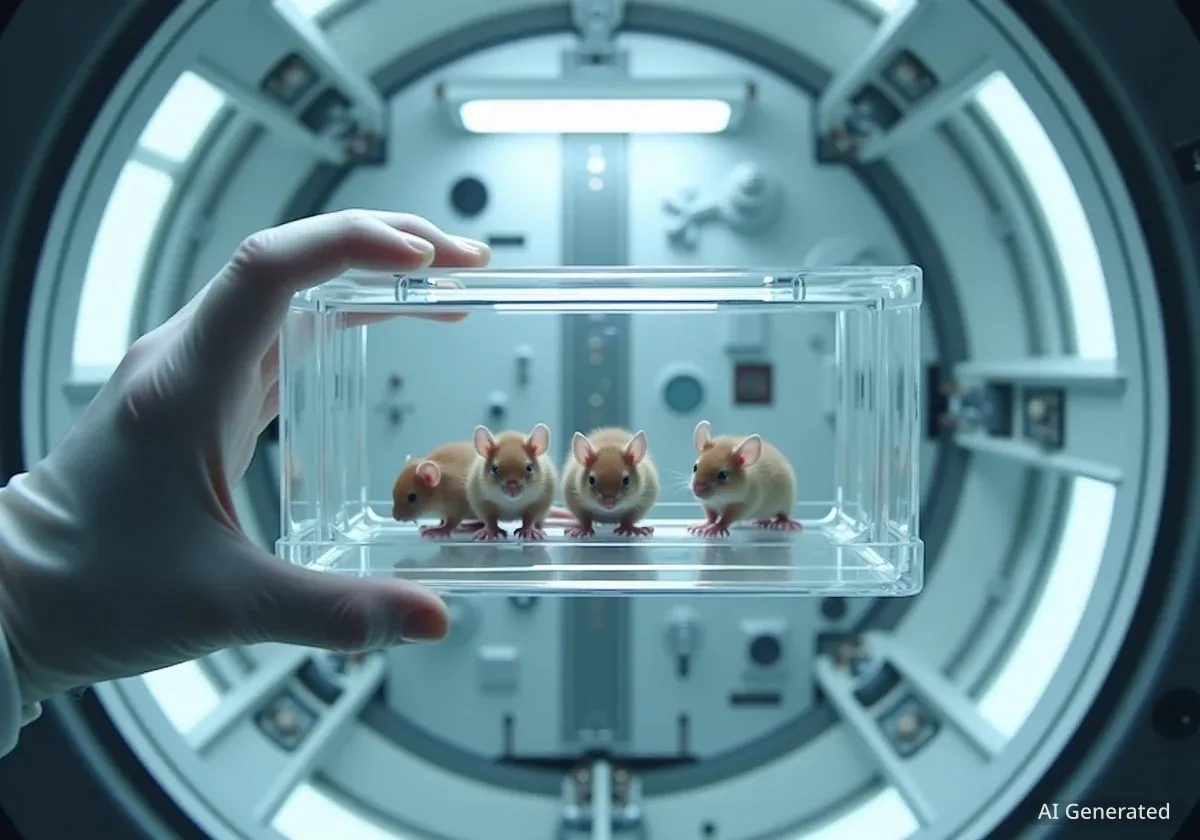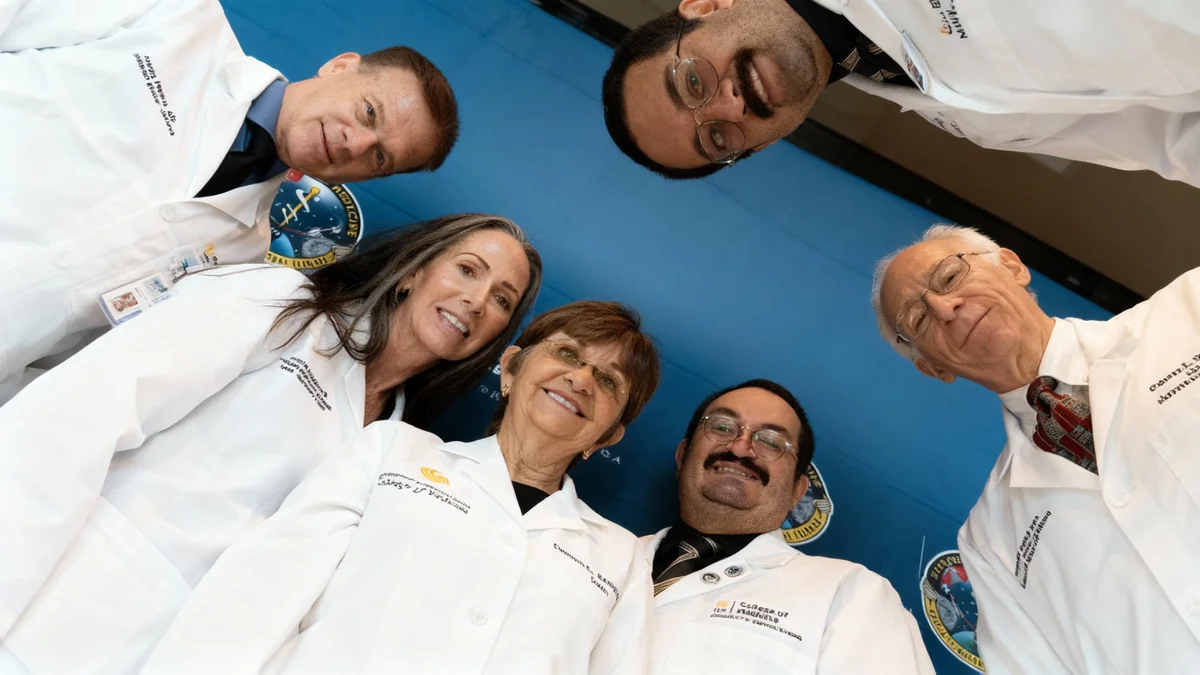Researchers from Hungary have developed a novel solution to a persistent health problem for astronauts: vision impairment caused by microgravity. A tiny, dissolvable eye insert, designed to deliver medication in space, has been successfully tested by an astronaut aboard the International Space Station (ISS).
This development addresses a significant challenge in space medicine, as traditional methods like eye drops are ineffective in a zero-gravity environment. The new device could become a standard part of medical kits for future long-duration space missions.
Key Takeaways
- Astronauts often experience vision problems due to fluid shifts in microgravity, a condition known as Space-Associated Neuro-ocular Syndrome (SANS).
- Standard eye drops do not work in space because gravity is required for the liquid to fall onto the eye's surface.
- Hungarian researchers created a rice-grain-sized dissolvable insert that delivers medication directly to the eye.
- The device has undergone its first successful test by an astronaut on the International Space Station.
The Challenge of Medicine in Microgravity
Life in space presents unique challenges to human health. One of the most common issues affecting astronauts on long-duration missions is vision degradation. This condition occurs because the lack of gravity allows bodily fluids to shift upwards into the head, increasing pressure inside the skull.
This fluid redistribution can cause the back of the eyeball to flatten and the optic nerve to swell, a condition known as Space-Associated Neuro-ocular Syndrome, or SANS. While treatable with medication on Earth, administering those drugs in space is difficult.
Simple medical procedures become complex without gravity. For instance, eye drops, a common delivery method for ocular medication, rely on gravity to pull the liquid from the bottle and onto the eye's surface. In orbit, the liquid would simply float away as a sphere.
A Novel Solution from Hungarian Scientists
To overcome this obstacle, a team of researchers from Hungary developed an innovative drug delivery system. The device is a small, solid insert, roughly the size of a grain of rice, that can be placed directly onto the eye. Once in position, it slowly dissolves, releasing a controlled dose of medication over time.
Development and Collaboration
The project is a collaborative effort between two prominent Hungarian institutions. Diána Balogh-Weiser from the Budapest University of Technology and Economics and Zoltán Nagy of Semmelweis University led the research. Their work combines expertise in pharmaceutical technology and ophthalmology to create a device suitable for the extreme conditions of space.
This method bypasses the problems associated with liquids in microgravity. The solid form makes it easy for an astronaut to handle and apply. The slow-release mechanism ensures the medication is absorbed effectively without needing repeated applications.
First Test on the International Space Station
The culmination of the research was a recent test aboard the International Space Station. An astronaut successfully applied the eye insert, marking a significant milestone for the project. This initial human trial in a true space environment was designed to test the feasibility and ease of use of the device.
"The goal was to create a method that is simple, safe, and effective for astronauts to use themselves without extensive medical support," stated the research team during a recent discussion. The success of this first test confirms the practicality of the design.
The test focused on the application process rather than delivering active medication. Future iterations will contain therapeutic agents to treat SANS and other potential eye conditions that may arise during extended missions to the Moon or Mars.
Implications for Future Space Exploration
As space agencies like NASA and ESA plan for longer and more distant missions, including crewed voyages to Mars, astronaut health is a top priority. Protecting vision is critical for mission success, as astronauts must be able to operate complex equipment and perform intricate tasks.
SANS Statistics
According to NASA studies, signs of SANS have been observed in approximately 70% of astronauts after long-duration missions on the ISS. The severity can vary, but the high prevalence makes it a primary concern for space medicine.
This dissolvable eye insert represents a significant step forward in in-space medical treatment. Its success could pave the way for other solid-form, slow-release medications, reducing reliance on liquid-based drugs that are difficult to manage in zero gravity.
Potential Earth-Based Applications
While designed for space, this technology could also have benefits on Earth. Patients who have difficulty administering eye drops, such as the elderly or those with motor function impairments, could find a dissolvable insert to be a much simpler alternative.
- Improved Patient Compliance: A single insert could replace the need for multiple daily eye drops.
- Controlled Dosage: The slow-release formula ensures a consistent and accurate dose of medication.
- Reduced Waste: Solid inserts eliminate the spillage and waste common with liquid eye drops.
The research team is exploring these potential terrestrial applications. The extreme requirements of designing for space often lead to innovations that improve life on Earth, and this medical device may be another example of that technological transfer.





